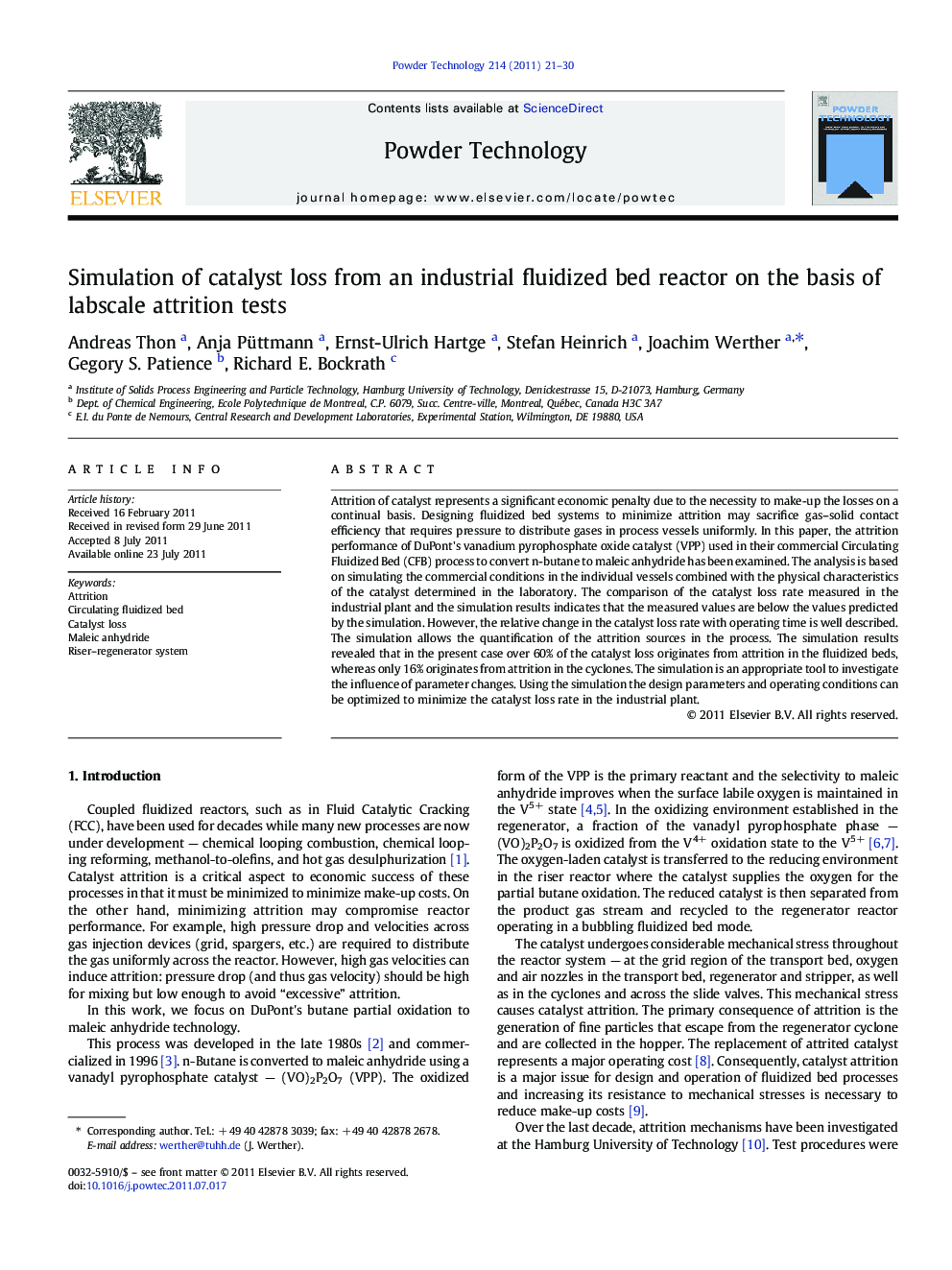| Article ID | Journal | Published Year | Pages | File Type |
|---|---|---|---|---|
| 237504 | Powder Technology | 2011 | 10 Pages |
Attrition of catalyst represents a significant economic penalty due to the necessity to make-up the losses on a continual basis. Designing fluidized bed systems to minimize attrition may sacrifice gas–solid contact efficiency that requires pressure to distribute gases in process vessels uniformly. In this paper, the attrition performance of DuPont's vanadium pyrophosphate oxide catalyst (VPP) used in their commercial Circulating Fluidized Bed (CFB) process to convert n-butane to maleic anhydride has been examined. The analysis is based on simulating the commercial conditions in the individual vessels combined with the physical characteristics of the catalyst determined in the laboratory. The comparison of the catalyst loss rate measured in the industrial plant and the simulation results indicates that the measured values are below the values predicted by the simulation. However, the relative change in the catalyst loss rate with operating time is well described. The simulation allows the quantification of the attrition sources in the process. The simulation results revealed that in the present case over 60% of the catalyst loss originates from attrition in the fluidized beds, whereas only 16% originates from attrition in the cyclones. The simulation is an appropriate tool to investigate the influence of parameter changes. Using the simulation the design parameters and operating conditions can be optimized to minimize the catalyst loss rate in the industrial plant.
Graphical abstractThe attrition performance of DuPont's VPP catalyst used in their commercial Circulating Fluidized Bed process to convert n-butane to maleic anhydride has been examined. The analysis is based on simulating the commercial conditions in the individual vessels combined with the physical characteristics of the catalyst determined in the laboratory.Figure optionsDownload full-size imageDownload as PowerPoint slideHighlights► Catalyst attrition data from a commercial circulating fluidized bed reactor. ► Simulation is based on labscale tests. ► Model predicts catalyst loss for different catalysts and operating conditions.
